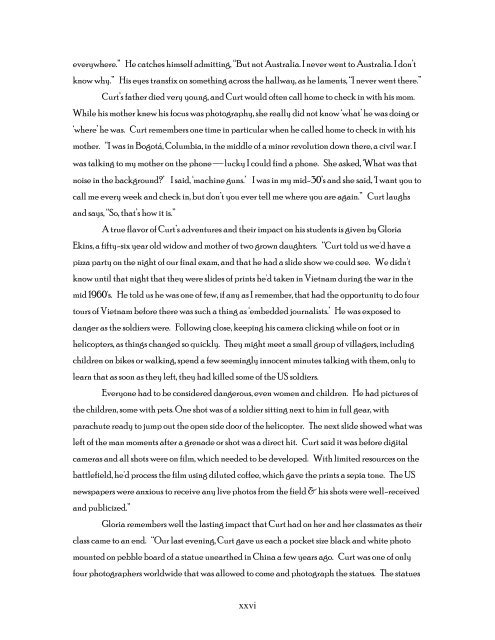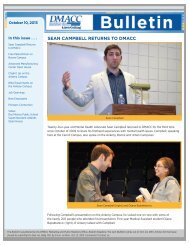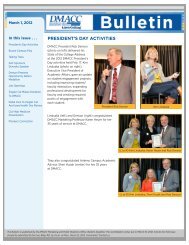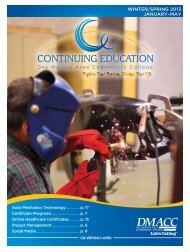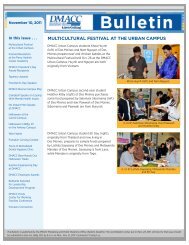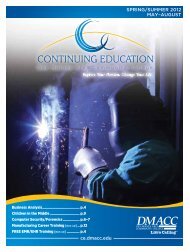The Skunk River Review - DMACC
The Skunk River Review - DMACC
The Skunk River Review - DMACC
You also want an ePaper? Increase the reach of your titles
YUMPU automatically turns print PDFs into web optimized ePapers that Google loves.
everywhere.” He catches himself admitting, “But not Australia. I never went to Australia. I don’t<br />
know why.” His eyes transfix on something across the hallway, as he laments, “I never went there.”<br />
Curt’s father died very young, and Curt would often call home to check in with his mom.<br />
While his mother knew his focus was photography, she really did not know ‘what’ he was doing or<br />
‘where’ he was. Curt remembers one time in particular when he called home to check in with his<br />
mother. “I was in Bogotá, Columbia, in the middle of a minor revolution down there, a civil war. I<br />
was talking to my mother on the phone ⎯ lucky I could find a phone. She asked, ‘What was that<br />
noise in the background?’ I said, ‘machine guns.’ I was in my mid-30’s and she said, ‘I want you to<br />
call me every week and check in, but don’t you ever tell me where you are again.” Curt laughs<br />
and says, “So, that’s how it is.”<br />
A true flavor of Curt’s adventures and their impact on his students is given by Gloria<br />
Ekins, a fifty-six year old widow and mother of two grown daughters. “Curt told us we'd have a<br />
pizza party on the night of our final exam, and that he had a slide show we could see. We didn't<br />
know until that night that they were slides of prints he'd taken in Vietnam during the war in the<br />
mid 1960's. He told us he was one of few, if any as I remember, that had the opportunity to do four<br />
tours of Vietnam before there was such a thing as ‘embedded journalists.’ He was exposed to<br />
danger as the soldiers were. Following close, keeping his camera clicking while on foot or in<br />
helicopters, as things changed so quickly. <strong>The</strong>y might meet a small group of villagers, including<br />
children on bikes or walking, spend a few seemingly innocent minutes talking with them, only to<br />
learn that as soon as they left, they had killed some of the US soldiers.<br />
Everyone had to be considered dangerous, even women and children. He had pictures of<br />
the children, some with pets. One shot was of a soldier sitting next to him in full gear, with<br />
parachute ready to jump out the open side door of the helicopter. <strong>The</strong> next slide showed what was<br />
left of the man moments after a grenade or shot was a direct hit. Curt said it was before digital<br />
cameras and all shots were on film, which needed to be developed. With limited resources on the<br />
battlefield, he'd process the film using diluted coffee, which gave the prints a sepia tone. <strong>The</strong> US<br />
newspapers were anxious to receive any live photos from the field & his shots were well-received<br />
and publicized.”<br />
Gloria remembers well the lasting impact that Curt had on her and her classmates as their<br />
class came to an end. “Our last evening, Curt gave us each a pocket size black and white photo<br />
mounted on pebble board of a statue unearthed in China a few years ago. Curt was one of only<br />
four photographers worldwide that was allowed to come and photograph the statues. <strong>The</strong> statues<br />
xxvi


